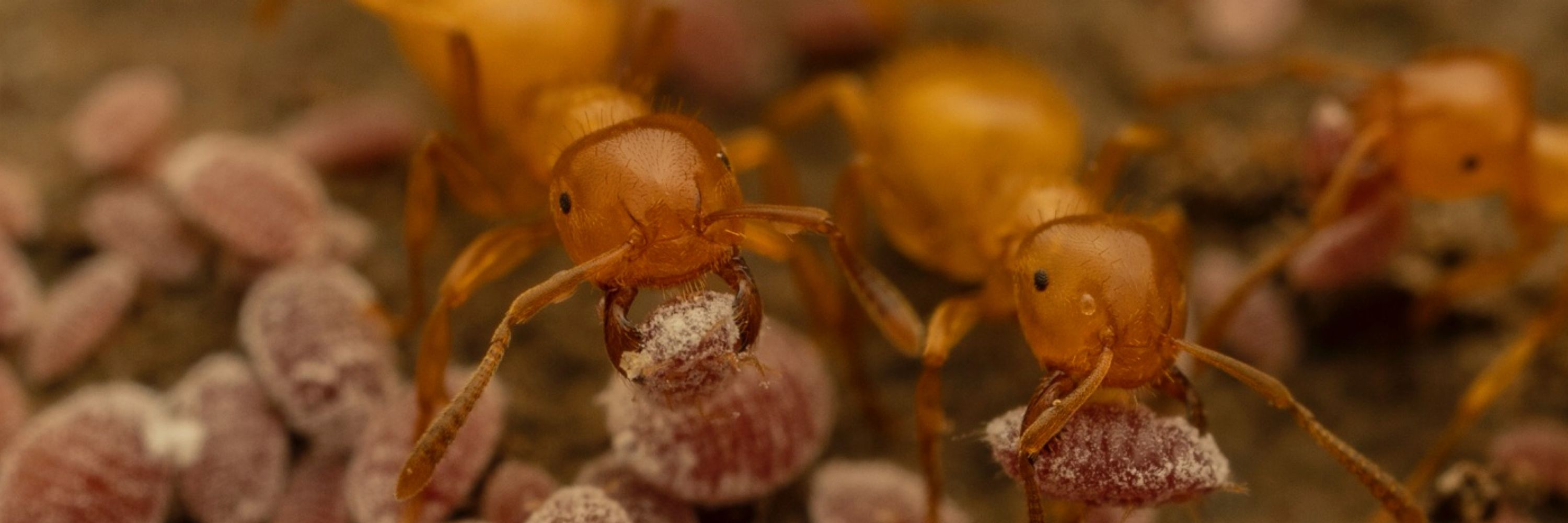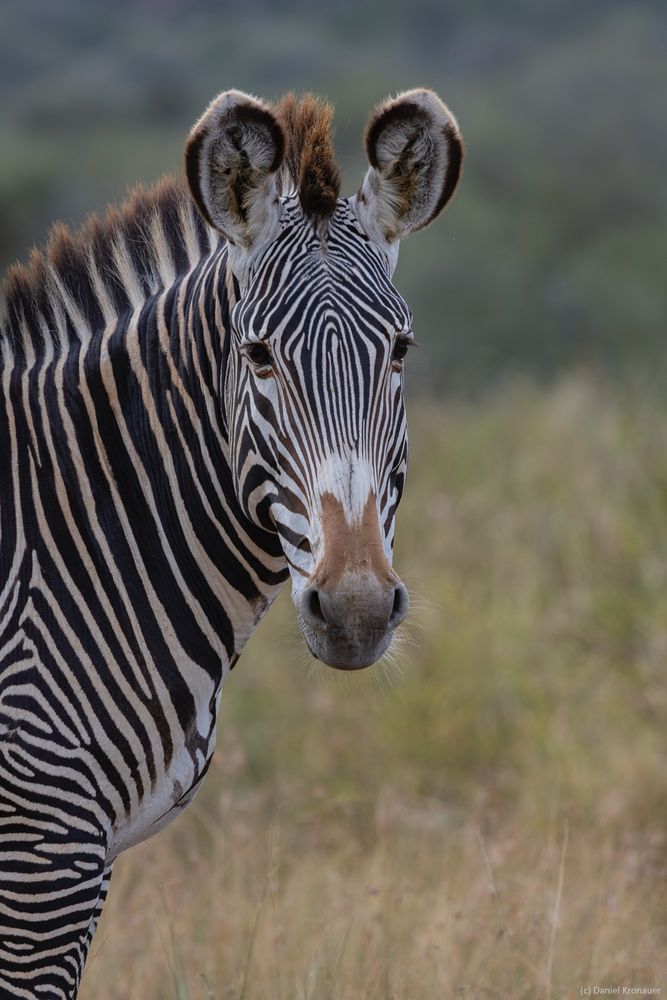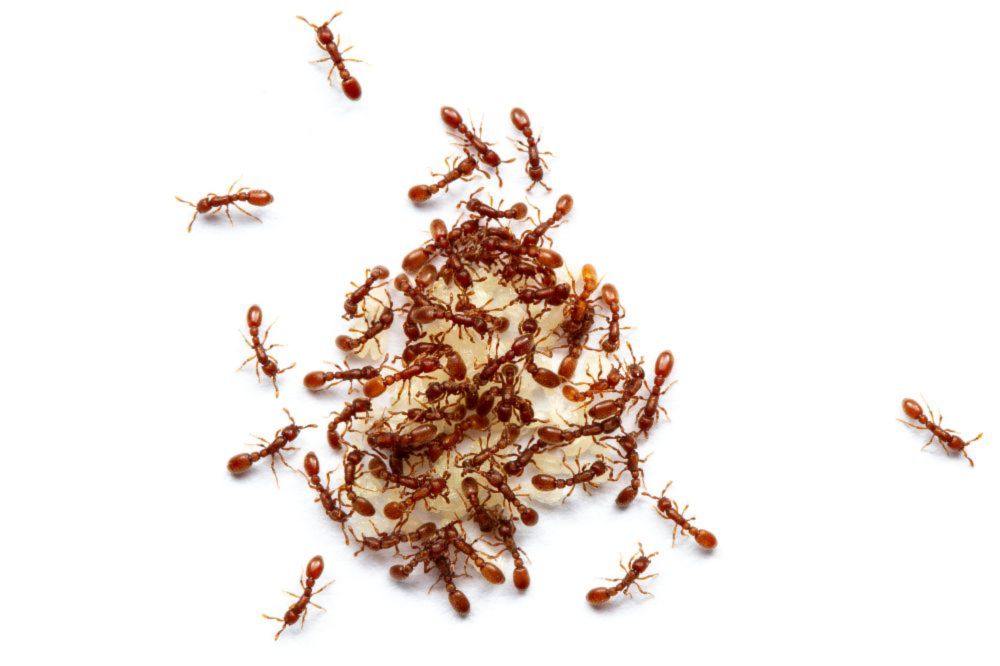
Daniel Kronauer
@danielkronauer.bsky.social
PI @Rockefeller University. Investigator @HHMI. Instigator of clonal raider ant project #CRAP. 🐜 Evolution, Behavior & Neuroscience. Posts science and photography. 🧠 📸
https://www.rockefeller.edu/research/2280-kronauer-laboratory/
https://www.rockefeller.edu/research/2280-kronauer-laboratory/
Final version now out in @elife.bsky.social: Heterozygosity at a conserved candidate sex determination locus is associated with female development in the clonal raider ant (Ooceraea biroi) doi.org/10.7554/eLif...

Heterozygosity at a conserved candidate sex determination locus is associated with female development in the clonal raider ant (Ooceraea biroi)
A complementary sex determination locus is conserved in ants and dates back to approximately 112 million years ago.
doi.org
November 6, 2025 at 7:53 PM
Final version now out in @elife.bsky.social: Heterozygosity at a conserved candidate sex determination locus is associated with female development in the clonal raider ant (Ooceraea biroi) doi.org/10.7554/eLif...
New article from the lab out today, in which we discuss how social behavior evolves at the molecular level. From parenting across the animal tree of life to caste systems in social insects, it’s all connected (and, therefore, slowly starts to make sense)…
Parental care, and more complex cooperative systems of care, have independently evolved in hundreds of animal lineages. In an article published today, we explore how these behaviors evolve 𝘢𝘵 𝘢 𝘮𝘰𝘭𝘦𝘤𝘶𝘭𝘢𝘳 𝘭𝘦𝘷𝘦𝘭l shorturl.at/g5OPw /1

Convergent evolution of a conserved molecular network underlies parenting and sociality - Nature Reviews Genetics
Kay et al. review evidence that parental care, and more complex social behaviour based on parental care, evolved in multiple species through the repeated co-option of members of a pleiotropic molecula...
shorturl.at
November 4, 2025 at 4:41 PM
New article from the lab out today, in which we discuss how social behavior evolves at the molecular level. From parenting across the animal tree of life to caste systems in social insects, it’s all connected (and, therefore, slowly starts to make sense)…
Lab members are once again outdoing themselves at the annual @rockefeller.edu pumpkin carving contest. This year’s submission: an ant farm pumpkin with a carpenter ant colony digging to find a chamber of prey Drosophila.


October 29, 2025 at 4:49 PM
Lab members are once again outdoing themselves at the annual @rockefeller.edu pumpkin carving contest. This year’s submission: an ant farm pumpkin with a carpenter ant colony digging to find a chamber of prey Drosophila.
It’s mosquito o’clock apparently- here’s another cool paper about these unpleasant little blood suckers (with, it once again turns out, really interesting adaptations):
How does life evolve to adapt to modern cities?
Out now in Science, my PhD work with @lindymcbr.bsky.social uncovers the ancient origin of the “London Underground mosquito” – one of the most iconic examples of urban adaptation.
🧵(1/n)
@science.org
www.science.org/doi/10.1126/science.ady4515
Out now in Science, my PhD work with @lindymcbr.bsky.social uncovers the ancient origin of the “London Underground mosquito” – one of the most iconic examples of urban adaptation.
🧵(1/n)
@science.org
www.science.org/doi/10.1126/science.ady4515

Ancient origin of an urban underground mosquito
Understanding how life is adapting to urban environments represents an important challenge in evolutionary biology. In this work, we investigate a widely cited example of urban adaptation, Culex pipie...
www.science.org
October 29, 2025 at 1:50 AM
It’s mosquito o’clock apparently- here’s another cool paper about these unpleasant little blood suckers (with, it once again turns out, really interesting adaptations):
Reposted by Daniel Kronauer
What does mating look like when you only have a single shot at getting it right?
Very excited to share our work on an almost-invisible female control, rapidly evolving mating recognition systems, and species that break the rules and take over the world. IN MOSQUITOES>
Very excited to share our work on an almost-invisible female control, rapidly evolving mating recognition systems, and species that break the rules and take over the world. IN MOSQUITOES>

October 28, 2025 at 8:57 PM
What does mating look like when you only have a single shot at getting it right?
Very excited to share our work on an almost-invisible female control, rapidly evolving mating recognition systems, and species that break the rules and take over the world. IN MOSQUITOES>
Very excited to share our work on an almost-invisible female control, rapidly evolving mating recognition systems, and species that break the rules and take over the world. IN MOSQUITOES>
New preprint from the lab: A reference brain for the clonal raider ant.
With this resource, which is based on 40 individual brains, you can register and compare all kinds of samples in a common space. It comes with lots of detailed protocols and a user-friendly GUI.
www.biorxiv.org/content/10.1...
With this resource, which is based on 40 individual brains, you can register and compare all kinds of samples in a common space. It comes with lots of detailed protocols and a user-friendly GUI.
www.biorxiv.org/content/10.1...
October 17, 2025 at 5:35 PM
New preprint from the lab: A reference brain for the clonal raider ant.
With this resource, which is based on 40 individual brains, you can register and compare all kinds of samples in a common space. It comes with lots of detailed protocols and a user-friendly GUI.
www.biorxiv.org/content/10.1...
With this resource, which is based on 40 individual brains, you can register and compare all kinds of samples in a common space. It comes with lots of detailed protocols and a user-friendly GUI.
www.biorxiv.org/content/10.1...
Reposted by Daniel Kronauer
New findings solve “developmental biology’s most complicated problem”: how each olfactory neuron in the ant expresses exactly one out of hundreds of olfactory receptors.
By @vcallier.bsky.social
#neuroskyence
www.thetransmitter.org/sensory-perc...
By @vcallier.bsky.social
#neuroskyence
www.thetransmitter.org/sensory-perc...
October 14, 2025 at 3:34 PM
New findings solve “developmental biology’s most complicated problem”: how each olfactory neuron in the ant expresses exactly one out of hundreds of olfactory receptors.
By @vcallier.bsky.social
#neuroskyence
www.thetransmitter.org/sensory-perc...
By @vcallier.bsky.social
#neuroskyence
www.thetransmitter.org/sensory-perc...
Reposted by Daniel Kronauer
Don't miss this piece in @thetransmitter.bsky.social by @vcallier.bsky.social on @danielkronauer.bsky.social's latest work! His lab discovered that a protective screen of spurious transcriptional activity enables each olfactory neuron to express exactly one out of hundreds of olfactory receptors.

Ant olfactory neurons reveal new gene regulation mechanism
The mechanism enables each olfactory neuron in the ant to express exactly one out of hundreds of olfactory receptors.
www.thetransmitter.org
October 14, 2025 at 7:50 PM
Don't miss this piece in @thetransmitter.bsky.social by @vcallier.bsky.social on @danielkronauer.bsky.social's latest work! His lab discovered that a protective screen of spurious transcriptional activity enables each olfactory neuron to express exactly one out of hundreds of olfactory receptors.
Reposted by Daniel Kronauer
A study from the @danielkronauer.bsky.social lab has revealed a new form of olfaction gene regulation that may be broadly shared across insect species—opening up a new window into studying connections between genes and social behaviors. Read a Q&A with the scientists:

What could an ant's sense of smell teach us about social organization? - News
Ants rely on smell to navigate nearly every aspect of their complex social lives. Thus, investigating their olfactory system, scientists believe, will reveal clues about the organization of ant society. But olfaction is one of the least understood sens...
www.rockefeller.edu
October 2, 2025 at 4:15 PM
A study from the @danielkronauer.bsky.social lab has revealed a new form of olfaction gene regulation that may be broadly shared across insect species—opening up a new window into studying connections between genes and social behaviors. Read a Q&A with the scientists:
Reposted by Daniel Kronauer
I’m petrified about today’s science news. Genetically modifying crabs to have cheetah genes? This could go sideways fast.
July 8, 2025 at 9:45 AM
I’m petrified about today’s science news. Genetically modifying crabs to have cheetah genes? This could go sideways fast.
Reposted by Daniel Kronauer
let me share a little story about a remarkable wasp that I encountered yesterday in our local deserts
I stumbled across her, and scrambled to get a few crappy photos .... but then realized that she had a burrow, perhaps a better photo op was possible ??
here she is at her burrow entrance.
I stumbled across her, and scrambled to get a few crappy photos .... but then realized that she had a burrow, perhaps a better photo op was possible ??
here she is at her burrow entrance.

September 23, 2025 at 1:25 AM
let me share a little story about a remarkable wasp that I encountered yesterday in our local deserts
I stumbled across her, and scrambled to get a few crappy photos .... but then realized that she had a burrow, perhaps a better photo op was possible ??
here she is at her burrow entrance.
I stumbled across her, and scrambled to get a few crappy photos .... but then realized that she had a burrow, perhaps a better photo op was possible ??
here she is at her burrow entrance.
Reposted by Daniel Kronauer
A new study in ants from @danielkronauer.bsky.social reveals a previously unknown mechanism that ensures that each olfactory neuron expresses only one odorant receptor, with broad implications for the study of gene regulation. #RockefellerScience
https://bit.ly/4pwPFLY
https://bit.ly/4pwPFLY
September 19, 2025 at 3:30 PM
A new study in ants from @danielkronauer.bsky.social reveals a previously unknown mechanism that ensures that each olfactory neuron expresses only one odorant receptor, with broad implications for the study of gene regulation. #RockefellerScience
https://bit.ly/4pwPFLY
https://bit.ly/4pwPFLY
The final version of our paper on how ants and possibly other insects use a crazy mechanism involving extensive transcriptional interference to regulate odorant receptor expression is now open access in my favorite journal, @currentbiology.bsky.social
authors.elsevier.com/sd/article/S...
authors.elsevier.com/sd/article/S...
ScienceDirect.com | Science, health and medical journals, full text articles and books.
authors.elsevier.com
September 19, 2025 at 3:44 PM
The final version of our paper on how ants and possibly other insects use a crazy mechanism involving extensive transcriptional interference to regulate odorant receptor expression is now open access in my favorite journal, @currentbiology.bsky.social
authors.elsevier.com/sd/article/S...
authors.elsevier.com/sd/article/S...
Ant reproduction is getting weirder and weirder. Here’s the latest: queens of a Mediterranean harvester ant mate with males from a different species and then lay eggs that clonally inherit those males’ genome. I.e., they lay eggs that develop into a different species. 🤯
The discovery of an unusual reproductive system for one ant species solves a long-standing puzzle
go.nature.com/47mxGkM
go.nature.com/47mxGkM

Ant queens produce sons of two distinct species
The discovery of an unusual reproductive system for one ant species solves a long-standing puzzle about a missing population of another ant species.
go.nature.com
September 5, 2025 at 10:07 PM
Ant reproduction is getting weirder and weirder. Here’s the latest: queens of a Mediterranean harvester ant mate with males from a different species and then lay eggs that clonally inherit those males’ genome. I.e., they lay eggs that develop into a different species. 🤯
Finally, an ant photo from my recent Kenya trip. On Mount Kenya, you pass through a zone of pristine rainforest, which is where I’ve previously worked on army ants. There are other cool ants though, and here’s an example. The dark sphere in this tree is a carton nest of Crematogaster acrobat ants.

August 24, 2025 at 12:02 AM
Finally, an ant photo from my recent Kenya trip. On Mount Kenya, you pass through a zone of pristine rainforest, which is where I’ve previously worked on army ants. There are other cool ants though, and here’s an example. The dark sphere in this tree is a carton nest of Crematogaster acrobat ants.
If you’re interested in ants, olfaction, gene regulation, or all of the above, here’s a new preprint from the lab for you. It describes an unorthodox mechanism of transcriptional interference by which ant olfactory sensory neurons produce a single functional receptor.
www.biorxiv.org/content/10.1...
www.biorxiv.org/content/10.1...

Transcriptional Interference Gates Monogenic Odorant Receptor Expression in Ants
Communication is crucial to social life, and in ants, it is mediated primarily through olfaction. Ants have more odorant receptor (OR) genes than any other group of insects, generated through tandem d...
www.biorxiv.org
August 21, 2025 at 9:31 PM
If you’re interested in ants, olfaction, gene regulation, or all of the above, here’s a new preprint from the lab for you. It describes an unorthodox mechanism of transcriptional interference by which ant olfactory sensory neurons produce a single functional receptor.
www.biorxiv.org/content/10.1...
www.biorxiv.org/content/10.1...
Reposted by Daniel Kronauer
Applications for faculty positions at Rockefeller are now open! We are seeking exceptional, creative scientists to join our faculty.
Learn more below:
Learn more below:

Faculty recruitment - Our Scientists
Applications for faculty positions are currently being accepted. Application deadline is October 6, 2025.
www.rockefeller.edu
August 20, 2025 at 3:13 PM
Applications for faculty positions at Rockefeller are now open! We are seeking exceptional, creative scientists to join our faculty.
Learn more below:
Learn more below:
What a loss!
We are deeply saddened to share that our friend and colleague Jim Hudspeth passed away on Saturday. We will remember and continue to be inspired by Jim’s integrity, his humility, and his unwavering commitment to discovery.

A. James Hudspeth, neuroscientist who unlocked secrets of hearing, has died - News
A. James Hudspeth, a Rockefeller neuroscientist who discovered how sound waves are converted into electrical signals in the ear's cochlea, died Saturday at his home in Manhattan. A pioneering scientist and dedicated mentor, he was the university's F.M. ...
www.rockefeller.edu
August 19, 2025 at 11:22 AM
What a loss!
A black panther! Melanistic leopards are extremely rare in Africa, and seeing one on our recent trip to Kenya was a dream come true. We were able to spend an hour right before sunset around this marvelous creature while staying at Mpala Research Centre in Laikipia.

August 17, 2025 at 7:05 PM
A black panther! Melanistic leopards are extremely rare in Africa, and seeing one on our recent trip to Kenya was a dream come true. We were able to spend an hour right before sunset around this marvelous creature while staying at Mpala Research Centre in Laikipia.
Sleeping hippos look like they’re smiling. Here, a group is resting on a river bank at Mpala Research Centre while being attended to by red-billed oxpeckers. These birds eat ticks off of large mammals, but also drink blood directly from wounds. 🦛 🇰🇪

August 15, 2025 at 9:04 PM
Sleeping hippos look like they’re smiling. Here, a group is resting on a river bank at Mpala Research Centre while being attended to by red-billed oxpeckers. These birds eat ticks off of large mammals, but also drink blood directly from wounds. 🦛 🇰🇪
The Grévy's zebra (Equus grevyi) is the largest and, sadly, rarest of the three zebra species. Luckily, Mpala Research Centre is home to a decent number of Grévy's zebras, which are studied as part of a long-term monitoring program:
www.mpalalive.org/field_guide/...
mpala.org/princeton-ze...
www.mpalalive.org/field_guide/...
mpala.org/princeton-ze...


August 14, 2025 at 9:20 AM
The Grévy's zebra (Equus grevyi) is the largest and, sadly, rarest of the three zebra species. Luckily, Mpala Research Centre is home to a decent number of Grévy's zebras, which are studied as part of a long-term monitoring program:
www.mpalalive.org/field_guide/...
mpala.org/princeton-ze...
www.mpalalive.org/field_guide/...
mpala.org/princeton-ze...
A hyrax with its little one. These cutie pies were living right outside our cottage at Mpala Research Centre. 🇰🇪 Apparently it is World Elephant Day. So why hyraxes? Unlikely as it may seem, hyraxes are elephants’ closest living relatives.

August 13, 2025 at 2:39 PM
A hyrax with its little one. These cutie pies were living right outside our cottage at Mpala Research Centre. 🇰🇪 Apparently it is World Elephant Day. So why hyraxes? Unlikely as it may seem, hyraxes are elephants’ closest living relatives.
Some of the animals at Mpala Research Centre 🇰🇪 participate in ongoing projects. Here are vulturine guinea fowl studied by @damienfarine@blsky.social at the MPI for Animal Behaviour. They are individually marked and some are wearing solar-powered GPS tags. More info is here:
mpala.org/vulturine-gu...
mpala.org/vulturine-gu...

August 12, 2025 at 5:11 PM
Some of the animals at Mpala Research Centre 🇰🇪 participate in ongoing projects. Here are vulturine guinea fowl studied by @damienfarine@blsky.social at the MPI for Animal Behaviour. They are individually marked and some are wearing solar-powered GPS tags. More info is here:
mpala.org/vulturine-gu...
mpala.org/vulturine-gu...
Reposted by Daniel Kronauer
New research from @danielkronauer.bsky.social's lab in @pnas.org sheds light on how a young ant’s future is determined by genetics and the environment, finding that genes not only influence size, they change what a given size means for the colony. #RockefellerScience

How ant queens are made - News
Daniel Kronauer’s research on an unusual ant species illuminates the biochemistry and genetics behind complex social behavior—and potentially offers clues to the evolution of our own social brains.
www.rockefeller.edu
July 22, 2025 at 7:07 PM
New research from @danielkronauer.bsky.social's lab in @pnas.org sheds light on how a young ant’s future is determined by genetics and the environment, finding that genes not only influence size, they change what a given size means for the colony. #RockefellerScience
The disapproving looks of a barred owl… Woodstock, NY
July 7, 2025 at 5:46 PM
The disapproving looks of a barred owl… Woodstock, NY

